Exploring the World from the Classroom
By: Dara Sborea
In this week’s blog, we are exploring VR in the classroom and how it can contribute to successful global collaborations. I chose to research Google Cardboard. To be honest, I had never heard of Google Cardboard before. When I googled it, I thought it would be expensive and out of reach for many teachers and districts. I very happily found out that there are Google Cardboard goggles available for as little as $9 each. I’m sure that if I researched pricing even more, there are bulk price and educational discounts available as well.

There are several apps available to use with Google Cardboard. You can find all these apps on the Google Play Store. With these apps, your students can explore zoos around the world, space, the deep sea, and so much more, without ever leaving the classroom.
Youtube 360 videos are also a great tool for classrooms. They allow students to experience the sights and sounds of areas they may not otherwise have the chance to visit. One great Youtube 360 video I explored that I found fascinating on a personal level was of the Northern Lights in Russia. I have always wanted to visit Russia and I’ve always wanted to see the Northern Lights.
What are the ways we can use these tools in our classrooms to contribute to successful global collaborations? While thinking about how I wanted to answer this question, there were many ideas swirling in my mind. I thought about my major (French education). I thought about everything I’ve learned in this class (way too many things to list). And I thought about previous blog posts and assignments and what I have focused on in those. So for the purpose of this blog post, I’ve decided to try to pull all those things together.
In previous blog posts, I’ve focused on the SDGs concerning zero hunger and good health and well-being. In those posts, I focused on food; learning French words for food, visiting French farms virtually, class trips to French restaurants. But how does the food grow? And how can we create a successful global collaboration while learning, through the use of VR, how food grows?
Let’s start with how crops are pollinated. Honey bees pollinate 80% of all pollinating plants and more than 130 types of fruits and vegetables. Let’s take a look at a bee’s journey.
With VR, instead of just reading about something in a book, our students can experience it. This gives our students real-time and real-world experience.
So how do we connect something like the video about into being a global collaboration? There are so many options. First, let’s talk about a lesson plan that would incorporate the above VR session.
Ask the students what the bee is doing?
(Turn and talk to your neighbor about what you think the bee is doing.)
Is there anything on the bee? What is that called?
Discuss Vocabulary:
Pollenation
Pollinator
Pollen
Pistil
Stamen
NectarSTUDENT INSTRUCTIONS
Students will turn and talk to a neighbor then answer questions in group discussion. Students will do this using all the French vocabulary they have learned until this point.
In order to incorporate global collaboration, students will Skype with their counterparts in a classroom in France. Those students will have seen the same VR video. At that time, students will begin to discuss the video, and they will also discuss what their respective countries are doing to combat climate change and what they are doing to save the bees, which will have a huge impact on the entire cycle of slowing down climate change.

National Geographic: Out of Eden Walk
By: Dara Sborea
This week, we are exploring journalist Paul Salopek’s 24,000 mile journey, titled “Out of Eden Walk.” The idea was to follow the path out of Africa to other lands, just as our earliest ancestors did tens of thousands of years ago.
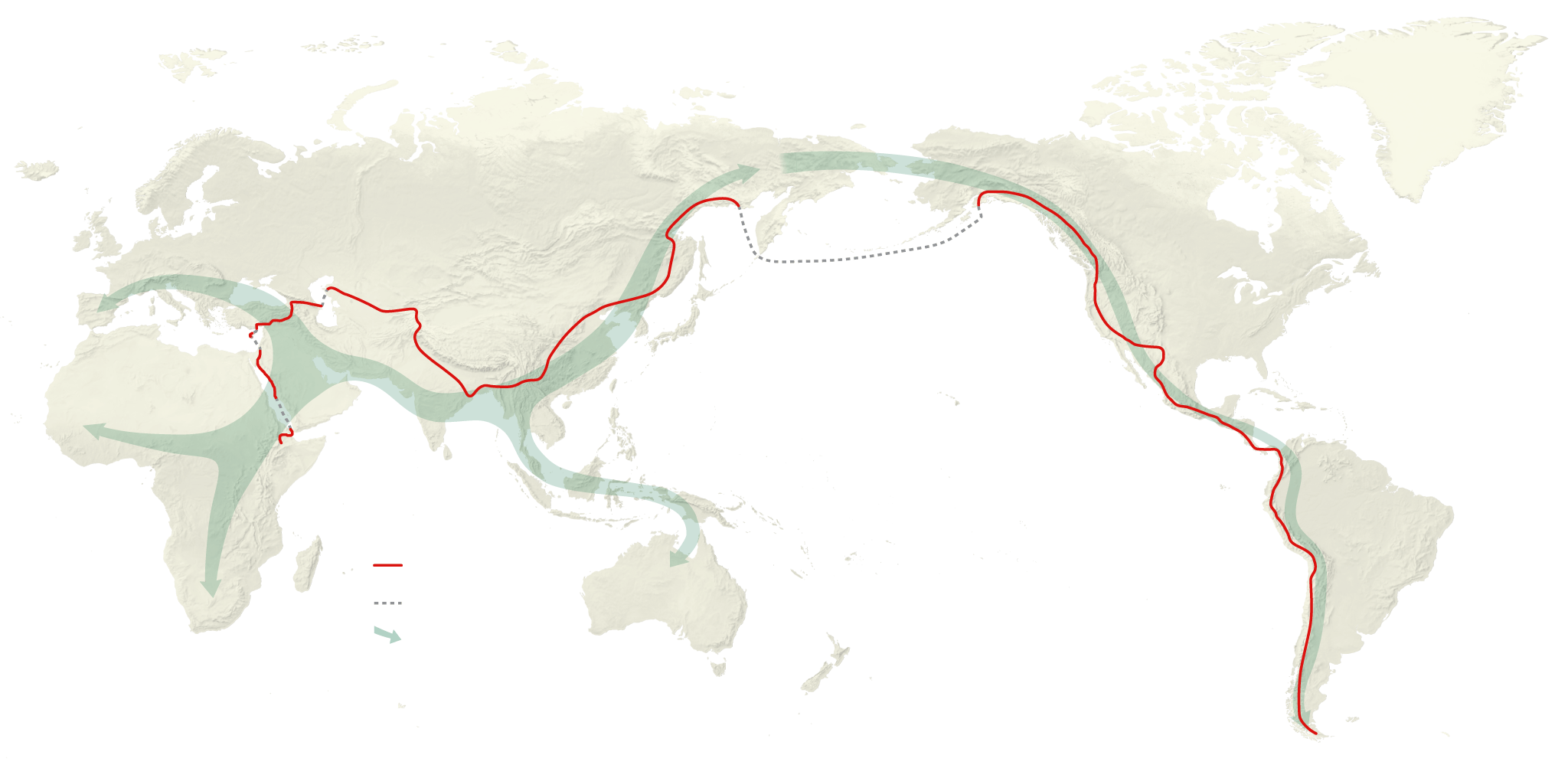
Salopek wanted to slow down so we can rediscover our world, on foot. His idea was to highlight the people and events along this journey that wouldn’t normally make the news. In this post, I will discuss three of destinations from the walk, but I highly suggest you take a look at Salopek’s journey for yourself.
Salopek begins where humankind began, in Africa. In the Great Rift Valley, which Salopek describes as an inhabited wilderness, he encounters Ahmed Alema Hessan, a leader of a clan of the Afar people. Hessan hasn’t driven camels in 30 years, but in this region, there is plenty of help as Salopek and Hessan walk and talk. Salopek describes the people who come and go along this part of the route as engaging in a public conversation, just to vanish into the horizon once their part is done.
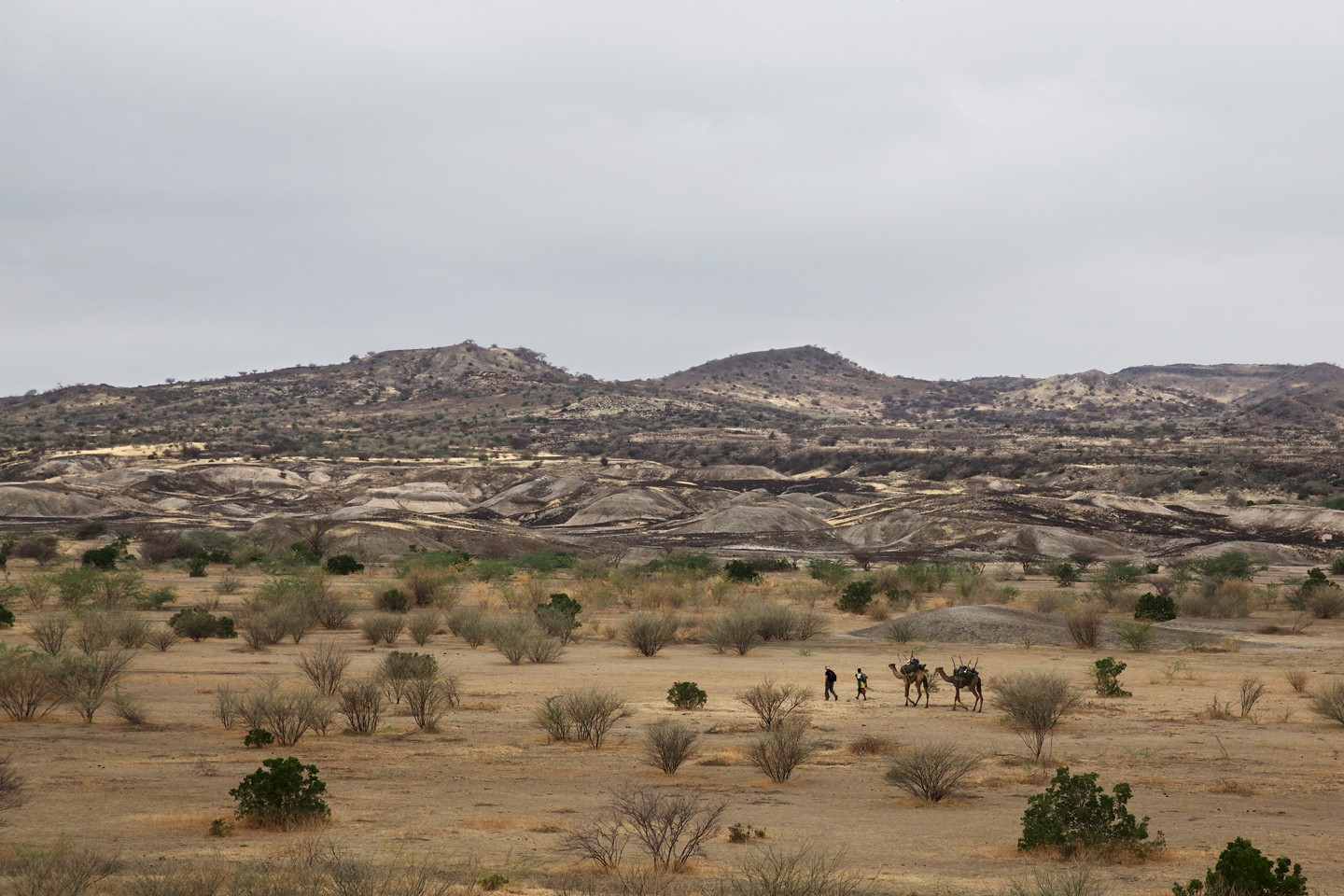
For a significant part of Salopek’s journey, he travels along the Silk Road, which was a network of trade routes that connected China and the Far East with the Middle East and Europe.
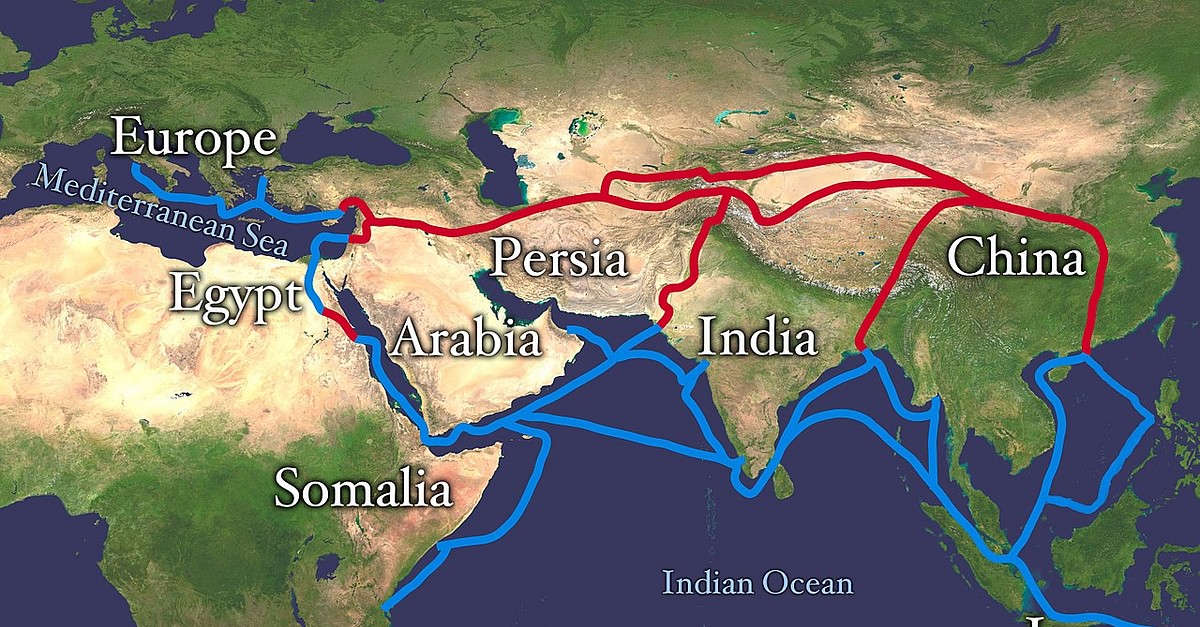
Horses were first domesticated in Kazakhstan, which means the first cowboys were there too. Salopek decides to look for a horse here to use as a pack animal. He is committed to completing his journey on foot, or by boat when required. As it turns out, while Kazakhstan’s citizens cling to their heritage with horses, few have seen or touched a live horse. Salopek does manage to find a horse breeder, and a horse is eventually delivered to him, but it’s likely not the one Salopek chose.
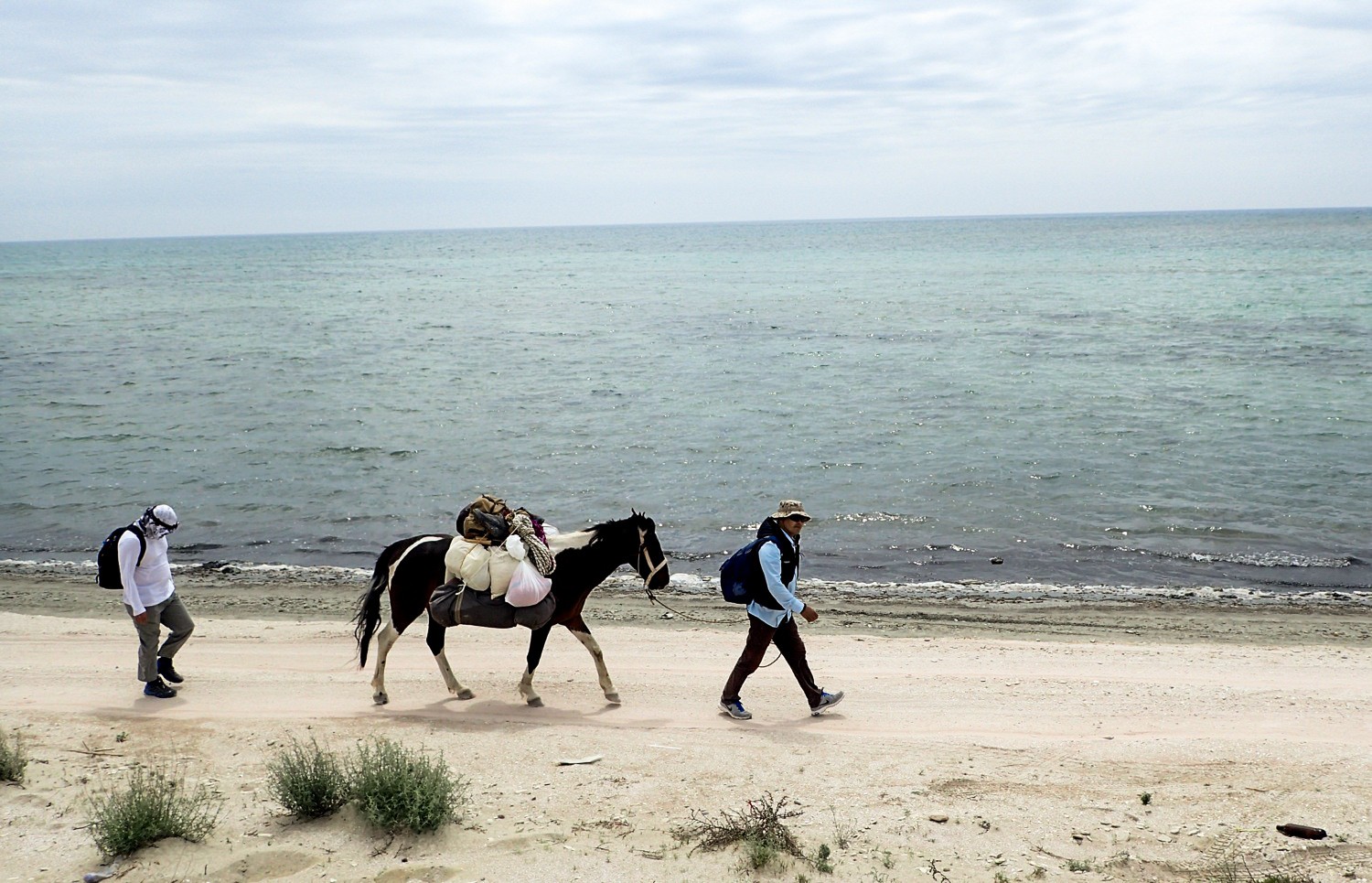
Unfortunately, Salopek’s trek was sidelined for a significant amount of time because of the Covid-19 pandemic. He has, however, resumed his journey and as of earlier this month (November 2021), he was in China’s biodiversity hotspot situated in the Gaoligong Mountains, near China’s border with Burma. To give you an idea of the massive biodiversity of the area, there are about 5,000 species of plants, 700 species of animals, and 1690 different insects! Several new plant species are discovered in the area each year. Salopek reminds us that while we were all focused on the climate change summit in Glasgow, the United Nations 15th biodiversity conference was held in China this year, and it was equally as important as the climate change summit.
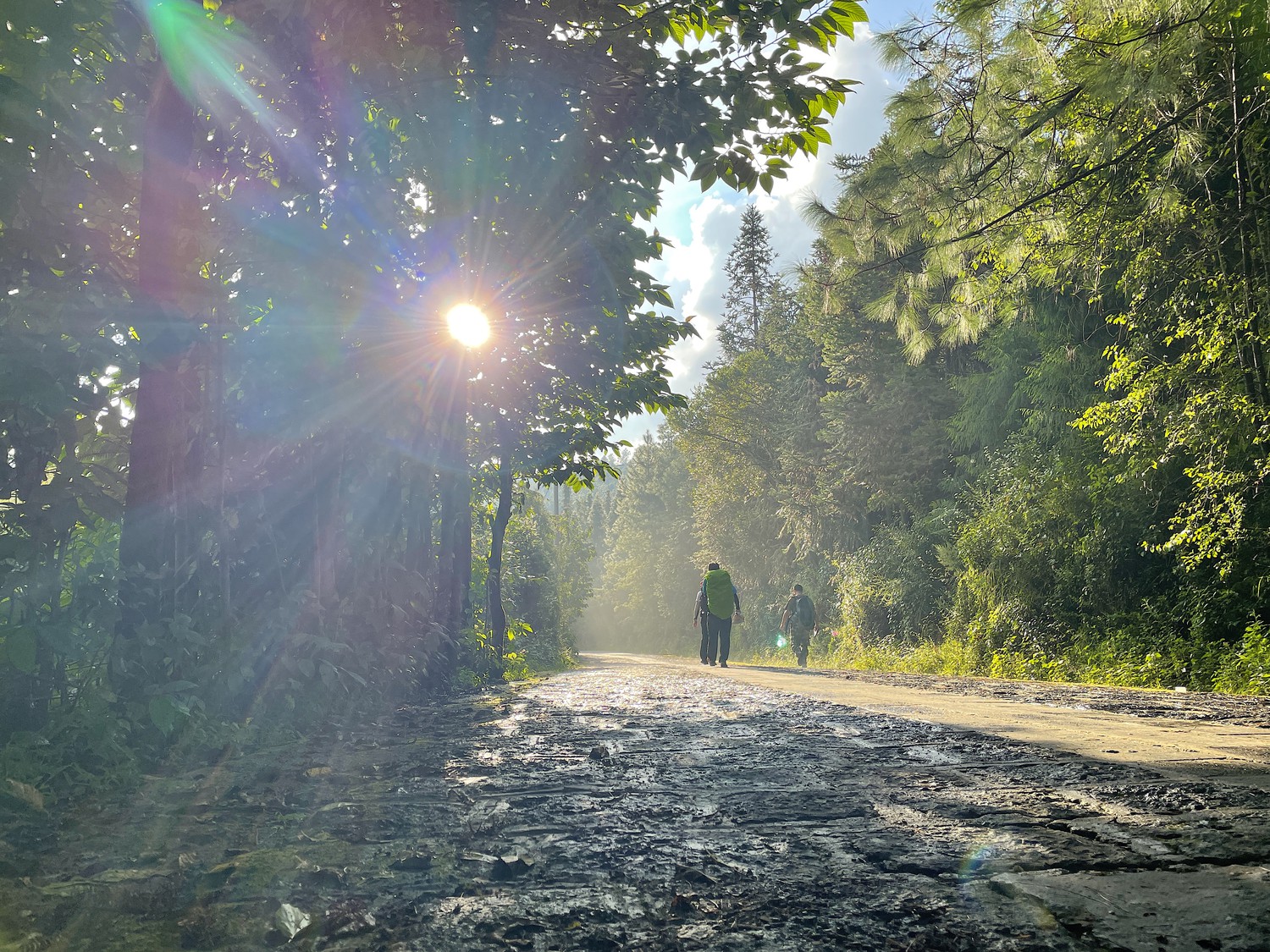
Tackling Poverty in a World Language Classroom
By: Dara Sborea

Poverty is a world-wide issue that we should all be concerned about. I recently read that 90% of the world’s population is closer to being homeless than to being a billionaire. That statistic has really stuck in my mind because of how true it is. While those reading this may have never experienced poverty, we can still all have empathy and concern for those who are experiencing poverty. We can also help to eradicate poverty if we all pitch in.
The assignment for this week’s blog post was to explore the resources available on We.org. Once again, we have been given a great opportunity to explore a resource replete with information. And once again, I urge you to bookmark this site. While we are focused on using the site as educators looking for ways to incorporate SDGs into our lesson plans, We.org is a valuable resource for everyone.

On the We.org site, I decided to look up the Teachers Poverty Module (I looked up a variety of modules, but this is the one I’m focusing on for this blog). This in-depth module first focused on how teachers can identify students and families suffering from poverty. It also gave info on recognizing co-occuring issues that teachers can look for to identify students who may benefit from additional resources and services. There was a list of services that teachers, students, and their families can contact if they are suffering from poverty.

Now, I’d like to share how I’d incorporate the issue of poverty into a world language lesson. In the picture above, you can see that it is a chart for a meal plan. It seems simple enough, but this can be adjusted depending on the level of students being taught. My idea would be to make a meal plan using English words for food, then translating those words into French. Once those words are translated, students can decide, using previously learned cultural information, if their French meal plan needs to be adjusted in order to accommodate a French diet. Once that is completed, students would be tasked with making a budget for each plan. They would need to budget in US dollars for the plan in English and Euros for the plan in French. Once that is complete, students would be given a budget amount and have to adjust their meal plans to be affordable. During the entire lesson, students would need to research food prices in the US and France.
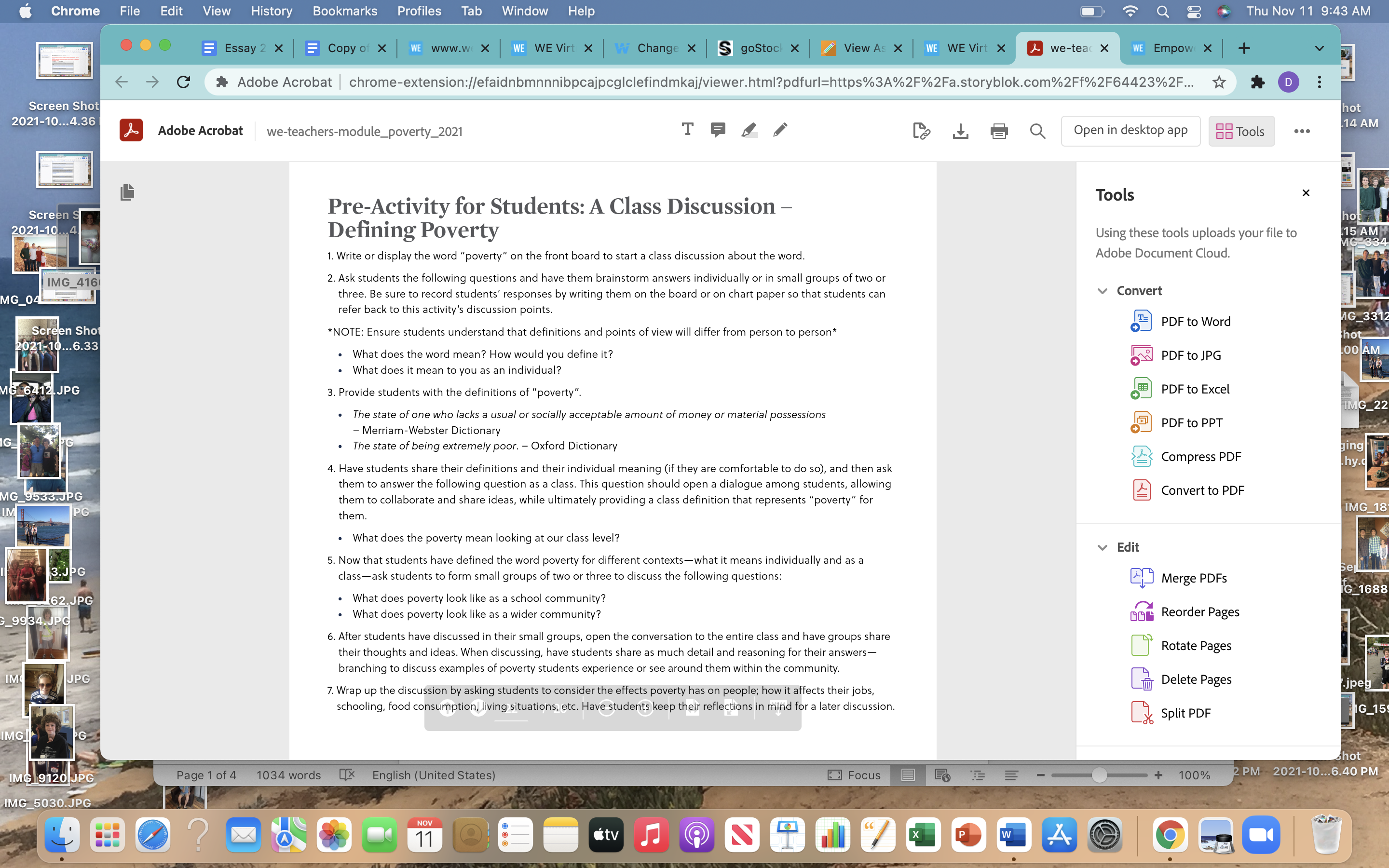
For this lesson, we would have a discussion about poverty around the world, and specifically poverty in the US vs. France. I would pose the questions: What salary puts a US family at a poverty level? What percentage of US families live in poverty? What percentage of US children live in poverty? What are these percentages in France? Why do you think these numbers are different in each country?

Once the lesson is near the end, I would ask students to come up with an action plan. We all know that starting locally can grow into having an impact globally. In order for students to see how their actions can take flight globally, I would contact a school in France, most likely through Skype classroom, and ask that class to take action along with our class, but in their own local community in France. We could discuss different ways each of our countries are tackling poverty and try to implement each others’ ideas in our respective countries.
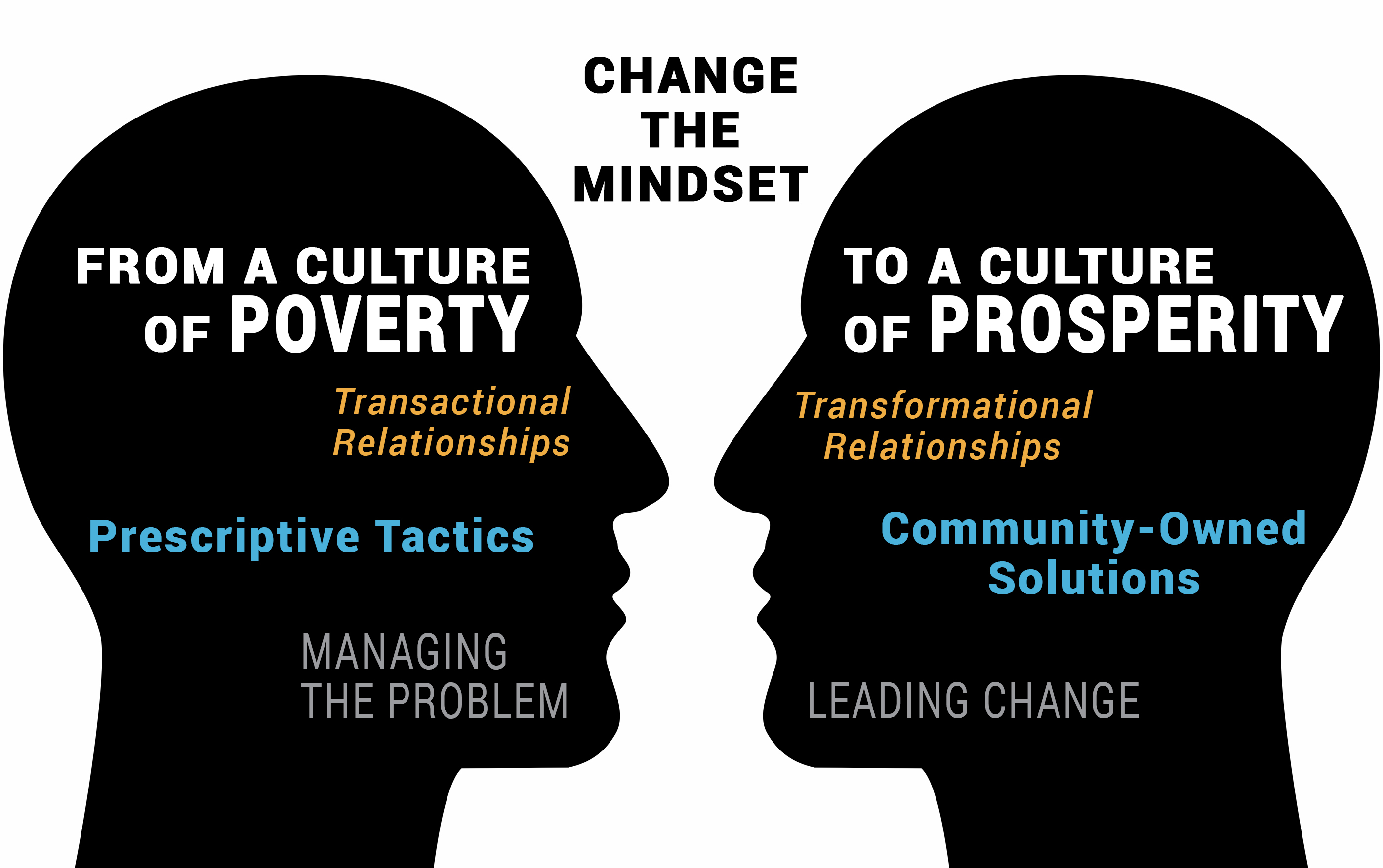
If we work together towards this common goal, it will benefit us all.
If we work to end poverty, it has the added benefit of helping achieve many other SDGs as well. We.org is a great tool to help us tackle this head-on.
The Benefits of Using Hyperdocs in Classrooms
By: Dara Sborea
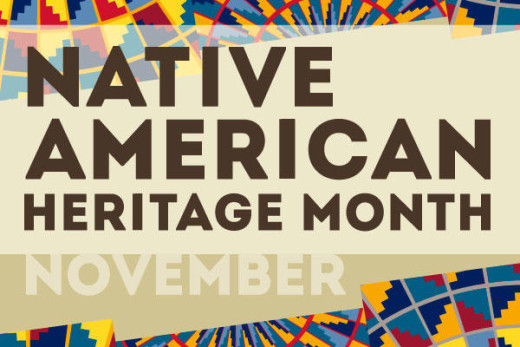
November is Native American Heritage Month, and our blog post topic this week is hyperdocs, so I decided to join the two together for this assignment. There are a lot of resources available to find hyperdocs that cover Native American heritage, as well as Native American history. I chose a fairly simple hyperdoc to blog about. The reason I chose this particular hyperdoc is because even though it is simple (designed for 3rd grade students), there is still a wealth of information and the hyperdoc still requires students to be creative, think outside the box, and use their tech skills and knowledge to complete the assignment.
One of the links on this hyperdoc brings students to a link where they can learn about the culture of different Native American tribes, as well as about the languages of different tribes! This link shows so many more Native American tribes than I ever knew existed.

Through this one hyperdoc, I was able to access maps to see where different tribes are located. I clicked on a link in the hyperdoc, clicked on another link once I opened the original link, then was able to open a map for the Koyukon tribe. It was so easy and so informative.

Check out this picture dictionary of Ahtna tribe animal words.

I wish I had the space to write about all the available links on one simple hyperdoc that was designed for 3rd graders, but I think you get the idea. I hope you click on the links I provided so you see just how valuable hyperdocs can be.
Virtual Field Trip to the Anne Frank House in Amsterdam
By: Dara Sborea
For this week’s blog, I took a virtual field trip to the Anne Frank House in Amsterdam.

When I was in elementary and middle school, and even in high school, I was always fascinated by real-life stories of people who had been forced into hiding during the second World War. This fascination and empathy for the people who endured these awful conditions began when my fourth grade teacher, Mrs. Klump, handed me a copy of The Diary of Anne Frank.
What amazed me the most about Anne Frank, as I read her diary, was that she still found ways to make her life normal, and that she went through the same things that we all go through, albeit for Anne, these things were encapsulated into a small space with limited interactions among those around her.

The virtual field trip allowed me to go through all the rooms of Prinsengracht 263, where the Secret Annex, as well as Otto Frank’s warehouse and business offices, were located. I have seen pictures of a few of these rooms before, but this field trip gave me an up close view of the rooms and items left there by the occupants of the Annex. It also gave summaries of which rooms were used for what purposes.

Something I didn’t remember from the diary was that Anne’s only access to nature was through an attic window, where she was able to see birds fly and enjoy the seasons by way of a chestnut tree visible through that window. That tree fell down on August 23, 2010. Before the tree fell, chestnuts were gathered from the ground, were germinated, and saplings were donated to schools named in honor of Anne Frank. In 2009, 150 descendants of the original tree and its saplings were donated to Amsterdamse Bos woodland park. In 2013, the last descendants of the tree were planted in the United States.

Before I took this virtual field trip, I had imagined the building that Anne Frank’s family and friends hid in was small. I knew there living quarters were tight, but I also imagined the rest of the building to be small as well. This field trip showed me that it was actually a much larger building, with many more rooms, than I had imagined. I had pictured the small living quarters, plus a small warehouse, an office, and a sparse kitchen. There were actually two warehouses, several offices, a fully equipped kitchen, as well as a stockroom and even an experimenting room in the building.





I also learned during the virtual field trip that there were many more people who helped the Frank family and their friends while they stayed hidden in the Secret Annex. Between my reading the diary and everything I’ve read since then, I only remembered reading about Miep Gies helping the family.

There were other employees of Otto Frank’s business, as well as at least one family member of an employee who helped the people hiding in the Secret Annex. These helpers included Victor Kugler, Johannes Kleiman, Johan Voskuijl (Bep’s father), Bep Voskuijl, and Jan Gies (Miep’s husband).

This virtual field trip gave me a glimpse into the Anne Frank House that I have not been able to experience before. I also learned so much more about Anne Frank’s and her family’s existence in that space that I hadn’t known before, even though I feel like I did have so much information before I took this field trip. For anyone unable to travel, this is a great way to see someplace that you may not otherwise be able to visit.
Co roku
By: Dara Sborea
For this week’s blog, I watched a Polish short comedy. I decided to specifically look for something from Poland because my best friend, Hanna, is from Poland. She came to the US when she was eleven years old. Over the twenty-three years that Hanna and I have been friends, we have often discussed our cultural differences and the different ways we view and experience the world. I was curious to see whether watching something from Poland would be familiar to me because of my relationship with my best friend, or if it would be different. I found it to be both.
Co roku, which means every year, is a story about a brother and sister who have a yearly visit with each other. The short stars Kaja Bien as sister Wiktoria and Miroslaw Kupiec as brother Jedrek.
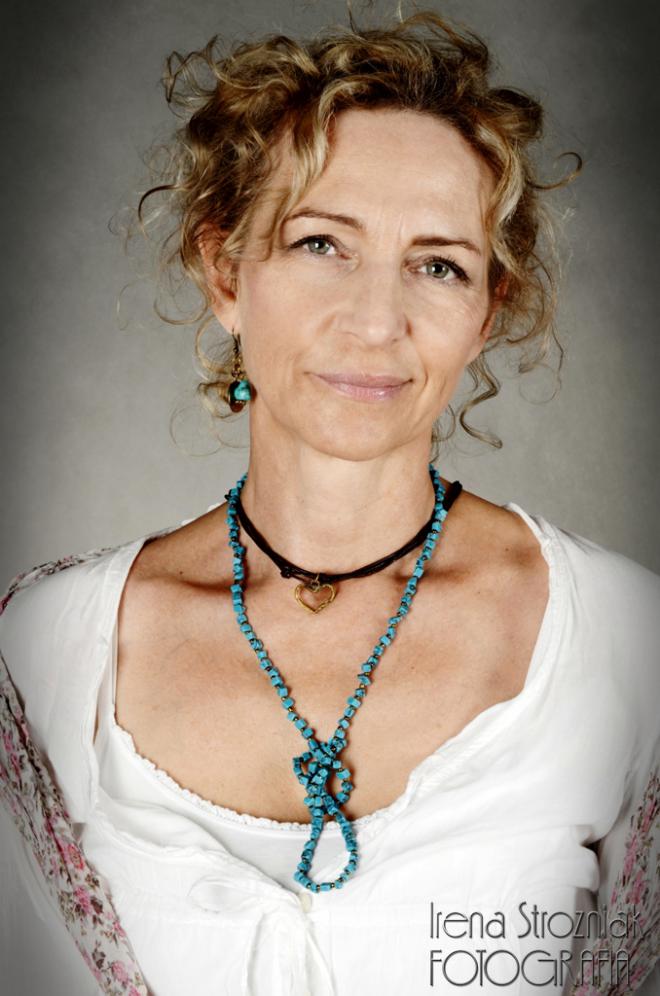

This short, like many other European films I have seen, centers on the characters. The interaction between brother and sister fills almost the entire film. In fact, there is only two other brief encounters in the thirty minutes of this short film, once with a painter who visits the sister, Wictoria’s apartment, and once with police officers in a park, where we don’t even hear them speak.
In the film, Wiktoria lives in a high-rise apartment. This is different from my own experience in the US, as I have almost always lived in a house with a yard. I have traveled extensively in Europe and have only ever met one person who lived in a house and not in an apartment. Wiktoria’s brother Jedrek, who comes to visit her, does mention living in the country and having space for Wiktoria to live with him, but he doesn’t say whether he lives in an apartment or a house. The travel in this short is made exclusively by bus. Part of the film is dedicated to looking up the best bus route after Wiktoria and Jedrek have a disagreement over which route is best. We aren’t privy to which town or city the short takes place in, but it does not appear to be a large city based on the few outdoor shots we see. I don’t know of many smaller US cities or larger US towns that rely heavily on public transportation. Wiktoria cooks for her brother Jedrek a few times in the short. The food she cooks for him is simple, such as bread with butter and cheese. He does complain that he wanted cold cuts on his bread, not just cheese.
What I loved most while watching this short film was the interactions between brother and sister. It seems how brothers and sisters interact is universal. Over the thirty minutes of this short film, Wiktoria and Jedrek disagree, make up, get on each other’s nerves, try to make up for getting on each other’s nerves, nit pick about the way they each do things, laugh about the way each do things, reminisce over drinks about their shared history, and show how much they love each other. In the end, Wiktoria and Jedrek argue over a small issue, and after Jedrek leaves Wiktoria’s apartment to go home, he returns because he doesn’t want to end his visit on a bad note. This could be any of us leaving a family reunion or visit with a loved one.


Sail the 7 Cs with Perusall
By: Dara Sborea
For this week’s blog post, we are exploring the Communicators chapter in our class textbook. For me, this was the most exciting chapter to read so far. I found myself saying, “Oh, I didn’t know that was there!” more times than I can count.
Our ability to communicate is essential in our job as educators. We all know how important it is to communicate with our students and to teach our students how to communicate with us and the world at large. What we sometimes forget is that it is equally important that WE communicate with the world at large, and especially with the families of our students.
How can this be achieved if we do not speak the same language as our students’ families, or if the family is not proficient in speaking English? Microsoft can help! Microsoft Translator is changing the way we interact with families and with students. This app service has captioning and transcription tools. Previously, many schools had to scramble to find volunteer translators to help exchange information with families. Now, teachers can steer families to a free, downloadable app and communication can start as soon as the app is downloaded.
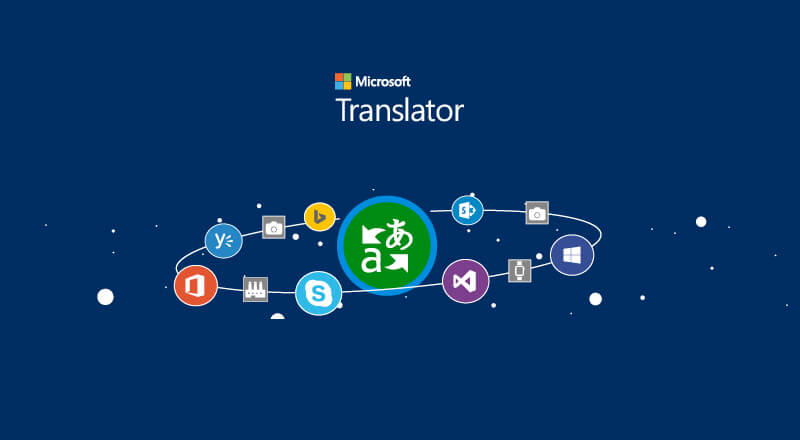
The app is already built into many programs that we regularly use. I was eager to see if this was true, so I opened Word and there it was! It was there the whole time and I had no idea. It is easy to navigate and can be used on multiple platforms. Microsoft Translator can translate from and to so many languages. It has everything from English, Spanish, French, and other commonly spoken languages to Amharic, Inuktitut, and even Klingon!

I knew I had to try out this feature to see how it works! I plan on being a French teacher, so I decided to write a few lines in English and use Microsoft Translator to see how it works. I’ve always been a little skeptical of whether or not online translators can truly get it right. I can honestly say that Microsoft Translator showed me that their online translator can certainly get it right!


I cannot wait to use the Microsoft translator app in my classroom. The example I have shown is of a class newsletter, but I am most excited about being able to communicate with families who may not have realized they can have a collaborative relationship with their children’s teacher, even if we don’t speak the same language.

Thank you for reading my blog and make sure to follow me on Twitter! @Daradoodle124
What Are Schools Around the World Doing to Implement the UN’s Goal of Ensuring Access to Affordable, Reliable, Sustainable, and Modern Energy for All?
By: Dara Sborea
Schools have many responsibilities. They are responsible for educating their students, for employing knowledgeable, caring and efficient staff, for conflict resolution, for socializing students, and for enhancing the community at large. One part of enhancing the community at large, and even the world, is by participating in programs that help the Earth to thrive.

Schools that utilize affordable, reliable, sustainable and modern energy model what can be done in the community. This helps the Earth, it is cost efficient for consumers and taxpayers, and it illustrates the sustainability of these types of resources.
So what are schools around the world doing about this? Before we get to that, what are forms of sustainable energy? Solar, wind power, hydropower, geothermal, bioenergy, and marine energy all fall under the category of sustainable energy because they are forms of energy that will never run out.

St. Paul Public Schools in St. Paul, Minnesota are excitedly making plans to explore more options for utilizing sustainable energy in their schools. Six schools in the district are already slated to receive solar panels, with plans to expand that number in the near future.
In France, this public school was made from renewable resources that were bio-sourced or from reuse.
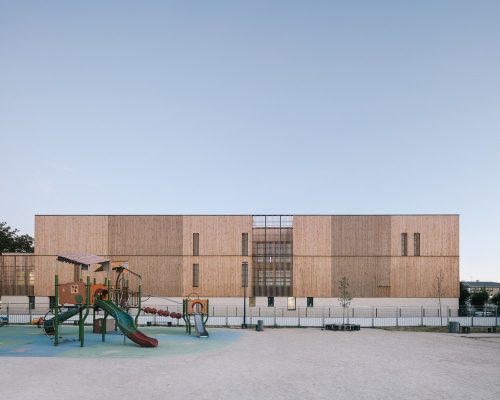
Stockton, CA schools began using a new fleet of electric buses this year. Not only is this good for the environment, it is also saving taxpayers and the school district $600,000. Stockton schools are on a mission to have zero emissions transportation for the entire school district.

While there are many schools around the world who are helping to achieve the goal of affordable, reliable, sustainable, and modern energy for all, we still have a long way to go. According to the UN’s SDGs initiative, as of 2021, the world is only using 25.4% sustainable energy in the electricity sector, 9.2% in the heat sector, and 3.4% in the transport sector. We must all work to raise these numbers if we are to hit the UN’s goals by the target year of 2030.

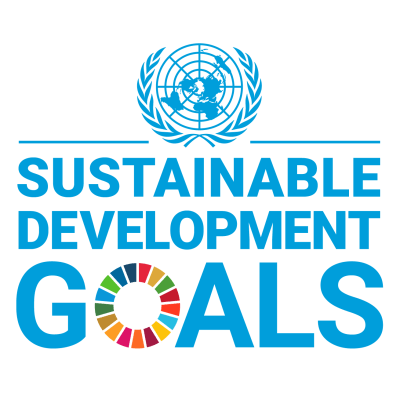
Encouraging Travel as a Language Teacher
By: Dara Sborea
This week, we are exploring the Global Educator’s Toolbox. We were asked to choose the grade level where we will teach and to research and choose a tool that we feel will best fit into our own classroom one day soon.
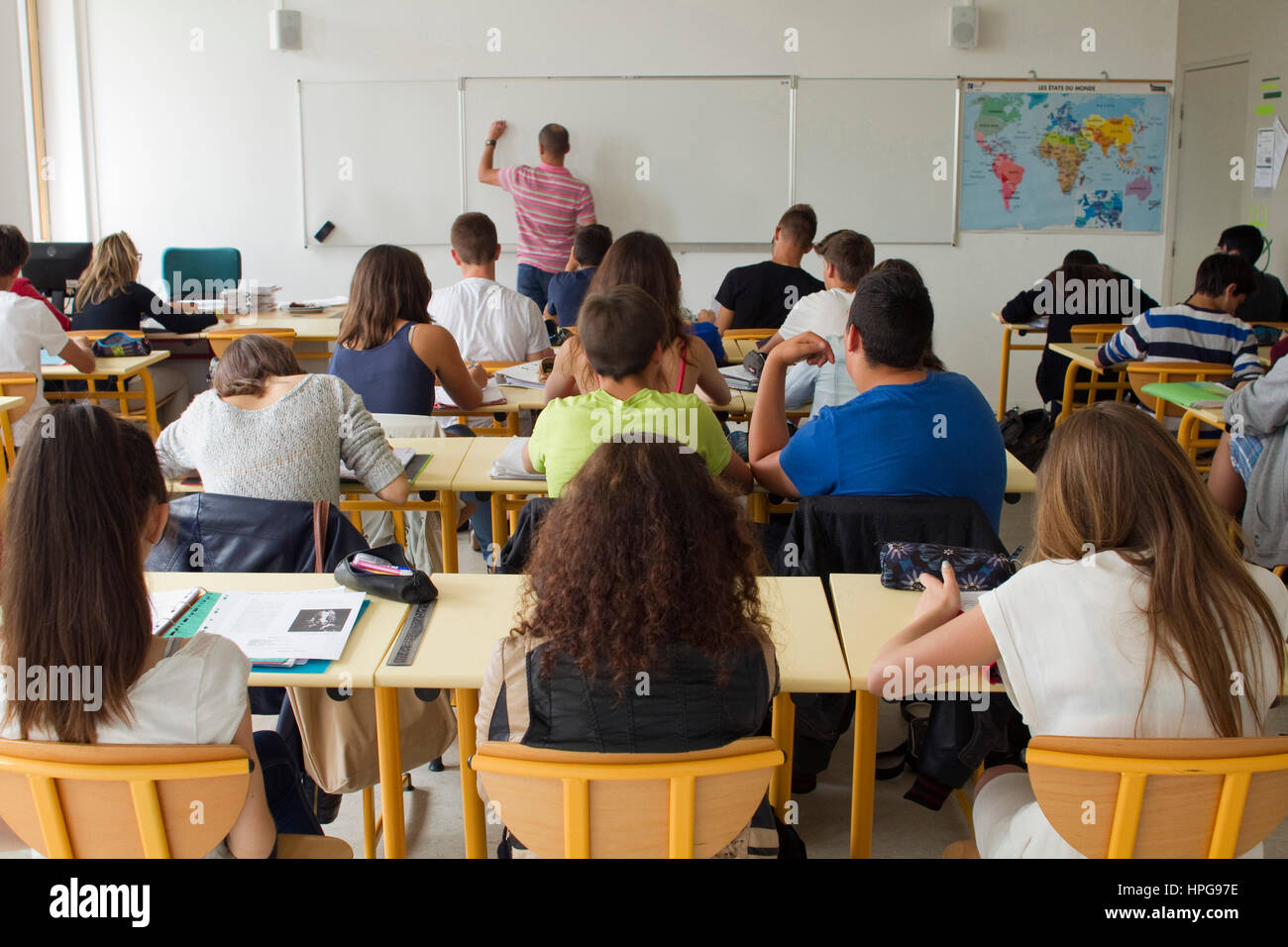
The tool I chose to investigate is ACIS. This is an educational travel company that can bring students all over the world. While most educational travel companies simply bring students on tours, ACIS goes a step further. They immerse students in the country or countries they visit. Students tour, but they also have opportunities to participate in local events and with local populations.
ACIS was started in 1978 with the idea of immersing students in the culture of the language they are studying. I believe this is the best way to get language learners to practice what they are learning. Being surrounded by people speaking the language, as well as seeing the language all around, is the best way to truly learn a language.


ACIS has various tours throughout each country they provide educational tours and experiences in. This allows language learners to hear the language in various regions, which each have their own accents and dialects. It also enables language learners to see the culture of many regions.
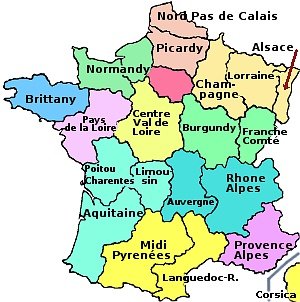
In my own classroom, I plan to go on these types of trips with my students so they can practice what we learn in the classroom. While educational tours such as these are often expensive, they are actually quite economical compared to planning the same trip without an educational tour service. These trips will be open to students school-wide and even district-wide if my district allows. There is also the option through ASICS to join an already established tour, so if it happens that only a few students are able to participate, they will not have to miss out on a great opportunity. My plan is to organize fundraising events so that every student who wants to immerse themselves in the language and culture of France, or any other country, will have the chance to do so.




Combining Collaboration with Tech
By: Dara Sborea
In Latin, to collaborate means to labor together. Check out the Merriam-Webster definition of collaborate. The Spanish word for collaborate is colaborar, the French use collaborer, the Italians collaborare, and the Basques say kolaborata. In every language, and in every part of the world, we collaborate every day.

In education, we are especially aware of how important collaboration is. In the past, our collaboration was done with other teachers, with in-service programs at our schools, and with fellow teachers we met in person. Today, we have the opportunity for collaborating in a much broader way through the use of technology. We can reach all parts of the world via FlipGrids, Skype, and Twitter, as well as many other sites.
How do we put this vast access to knowledge to good use without becoming overwhelmed? We have many options, and one of them is through Microsoft Teams. A program called Reading Progress is already built into Microsoft Teams for free. That program has about 100 passages that cover K-12, with a focus on K-6 passages. Microsoft Teams recently collaborated with a non-profit called ReadWorks in order to provide 4600 passages to be available on the Reading Progress program. In fact, this new addition to the already existing Reading Progress program was rolled out globally just this month.

This program is used by over seventeen million students, over one million educators, and in more than ninety-four thousand schools. The reading passages have been written and approved by educators worldwide who collaborated to put this massive electronic reading passage library together.
The program also includes ways for the students to collaborate. With digital classes, students can be grouped according to ability and can annotate passages and share answers and comments when they are asked questions on assignments that the teacher decides can be shared amongst a group.
There is a great summary article that gives us the rundown of what to expect from this updated program within Microsoft Teams and provides links to the program as well. Check it out!
Please follow me on Twitter to see what else is new in tech and education! https://twitter.com/Daradoodle124
Recent Comments